The Wavewalker is a walking leg jack-up platform used for construction and geotechnical investigation in rough seas, surf zones and beaches.
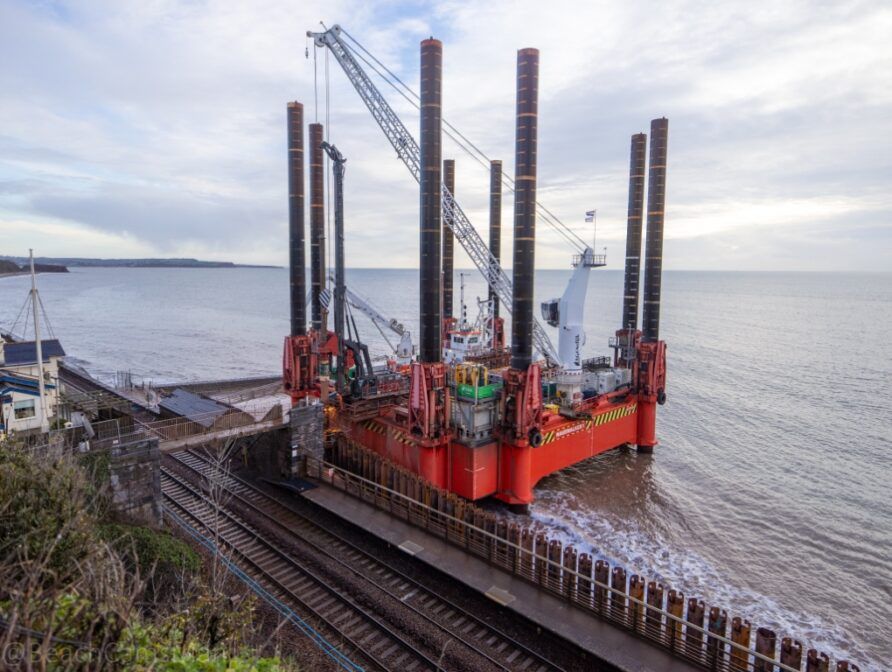
Wavewalker Capabilities
To quote from the operators’ description;
WaveWalker 1 is an innovative jackup which can be operated in conventional 4-legged mode or as an 8-legged, self-contained walking jackup platform, capable of safely operating and bidirectional movement whilst elevated, allowing the jackup to move and relocate without floating.
The key is to ‘relocate without floating’
This allows it to operate in the surf zone, basically striding forward over the waves.
Wavewalker 1 has eight independently jacking legs. Each of these is carried in a leg bearing unit, which slides on bull rails built into the hull structure.
Once on location, 4 legs on two opposite hull sides are lowered to the seabed and the rig is jacked up in the conventional manner. The other 4 legs in raised position are then slid to the end of the walking stroke by the walking cylinders. These legs are then lowered to the seabed and weight transferred to them.
The initial 4 jack legs are then retracted clear of the seabed and the walking cylinders driven to the extent of their stroke, causing the hull to slide 4 m in the required direction. The raised legs are then lowered to the seabed and weight transferred to them. Finally, the unloaded legs are jacked up clear of the seabed and reset to the start position.
In this way, a 4 m “walk” is completed, and the cycle can be repeated if required – overall walking speeds of up to 40 m per hour are achievable.
A time-lapse video of it walking is below
As can be seen from the image below, it is quite large, at 32m by 32m, and has a coverable moon pool, several cranes and accommodation for multiple crew members.
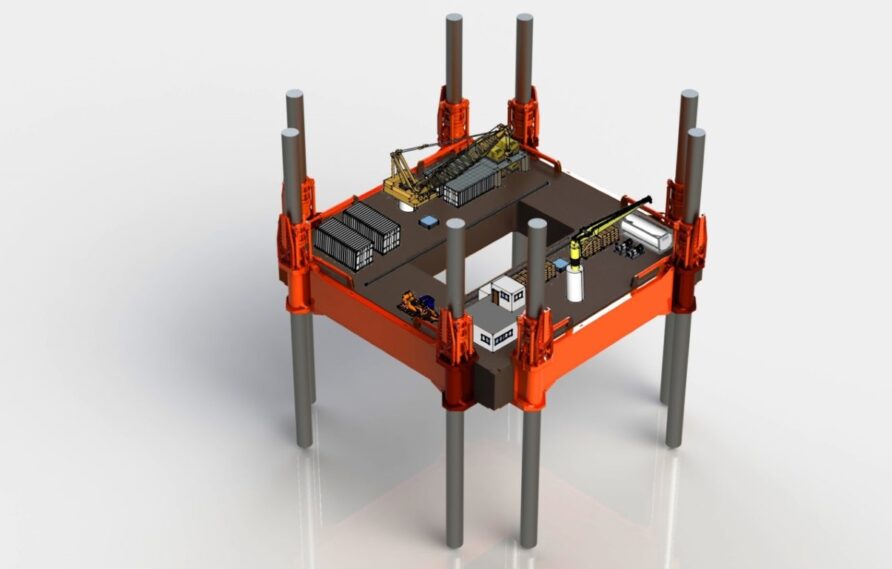
The video below show how it can simply jack itself out of the waves, very high waves.
Even when jacked down, it can withstand high sea states.
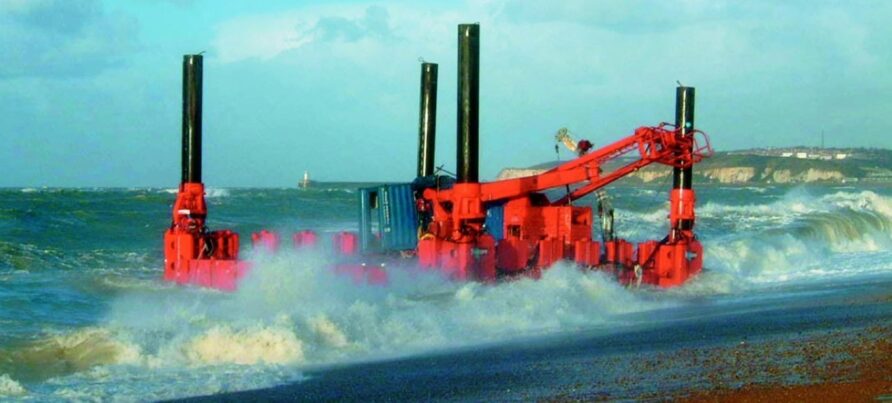
Wavewalker specification sheet.
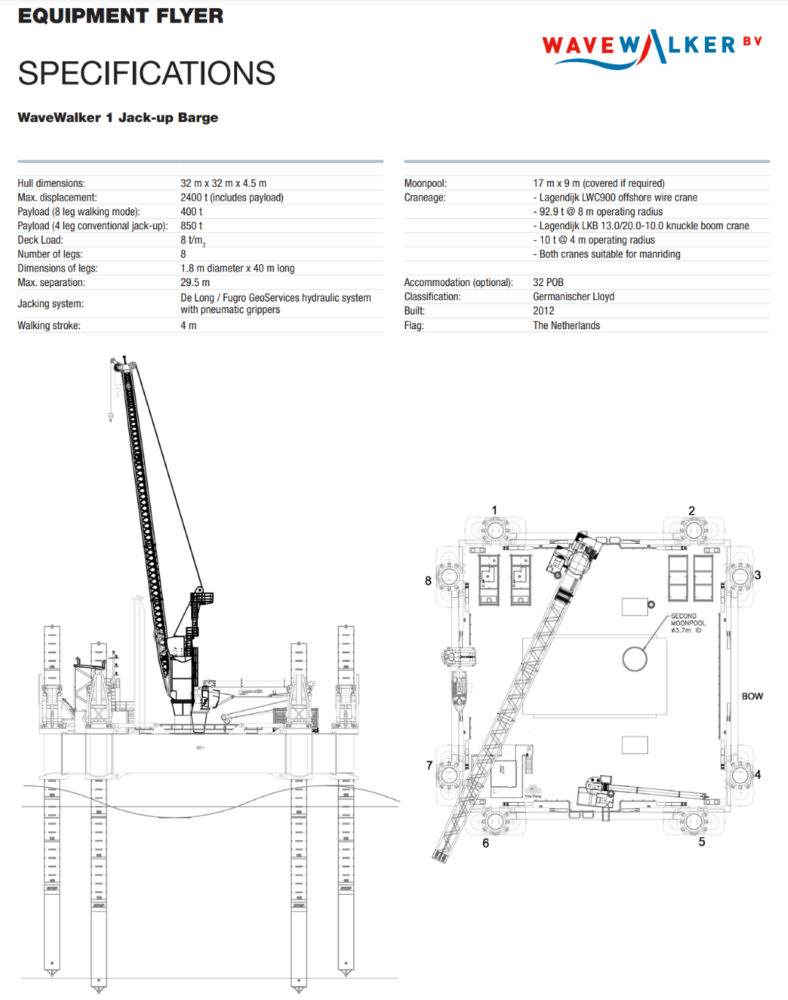
Wavewalker — Defence Applications (Deployable Pier)
In this post on the now withdrawn ELCAS-M, I looked at the ability of the US to build a causeway jetty.
ELCAS-M was a fantastic capability.
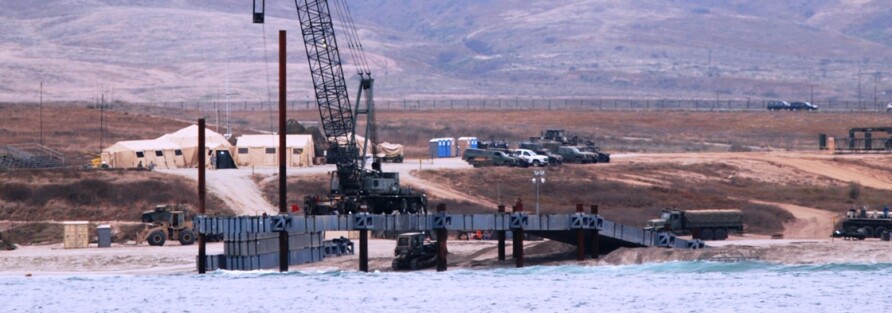
But it was extremely labour-intensive and required all components to be landed on the shore first.
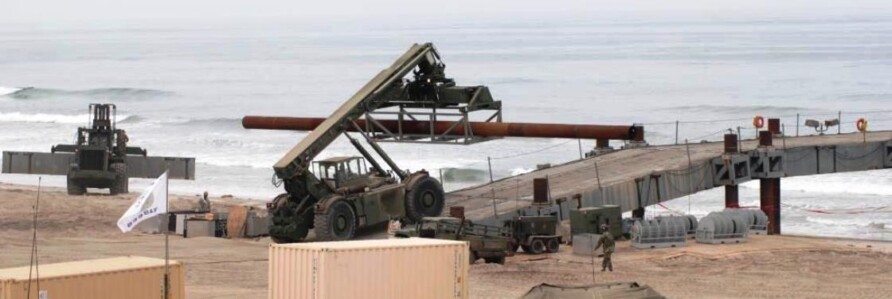
The build sequence was shore out, driving piles and attaching the causeway deck in sequence.
As seen during the recent Gaza pier deployment, not having ‘boots on the ground’ for political reasons limited options.
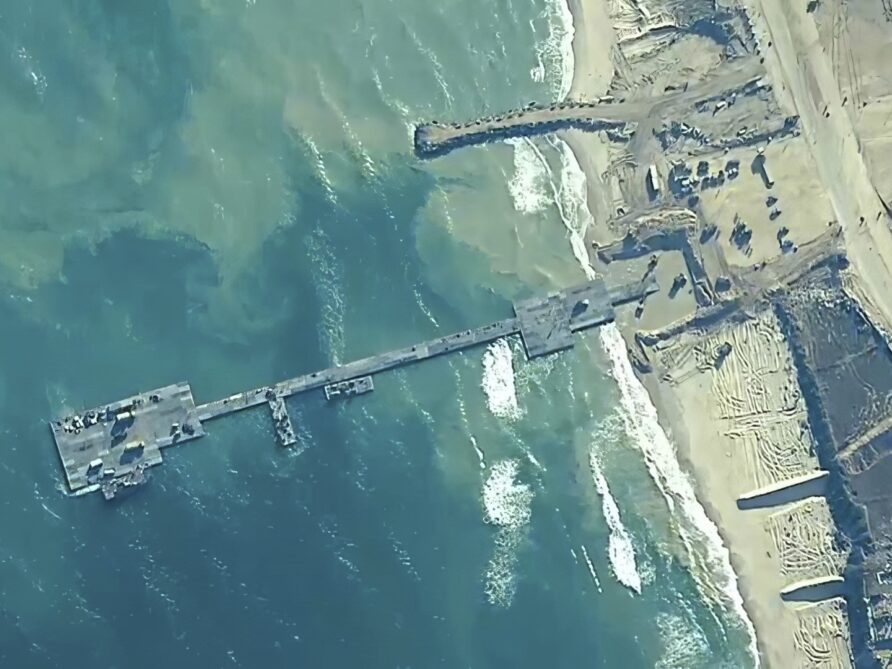
The Gaza Pier also highlighted the limitations of floating piers to high sea states. Unfairly, the pier was criticised for not withstanding higher waves, when the specific design limitations were exceeded.
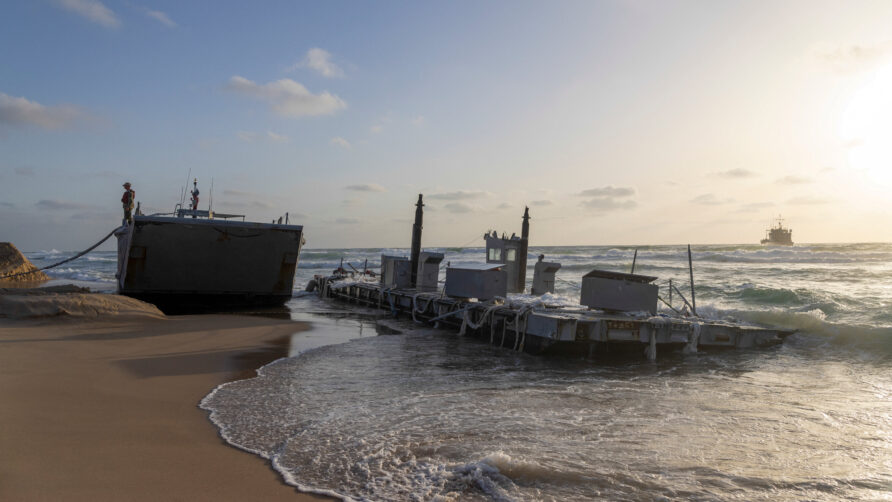
Design specifications are there for a reason, the deployment failed because decision makers opted to accept the risk.
ELCAS-M would have easily survived the same wave and wind conditions, but it would have taken much longer to build, been more resource hungry, and required a presence on the shore, none of which were politically acceptable.
A recent Wavewalker deployment offers a glimpse into a defence application.
Hinckley Point C is a new nuclear power station under construction in the UK, to reduce road traffic, the builders opted to construct a jetty.
Wavewalker was used to install the jetty piers and deck.
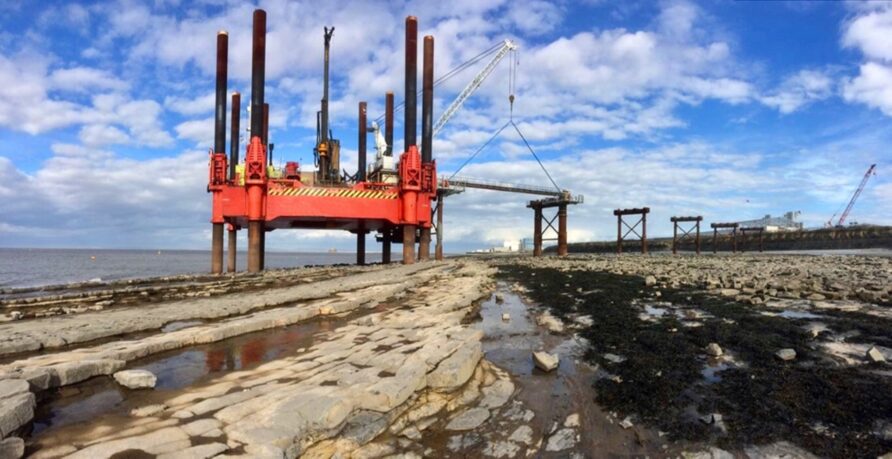
The finished jetty is part of a significant construction project and vastly better constructed than a relatively short life span defence project would need.
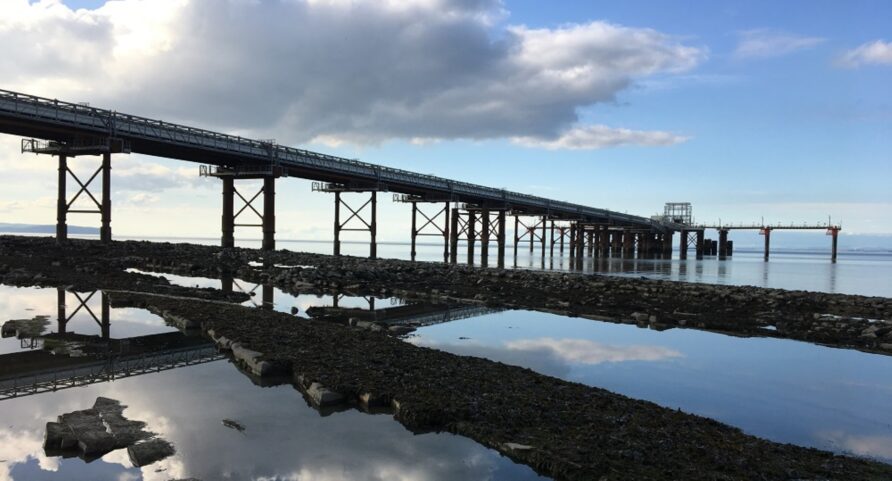
The key to understanding how Wavewalker could be used to build a deployable causeway pier is to understand that whatever is built, would only have to last for weeks and months.
To resist waves and provide a place for ships and lighters to offload, the following components are required.
- Deck supports
- Deck(s)
- Pier head
Deck supports could be conventionally piled, placed onto concrete blocks or rocks, utilise helical piling
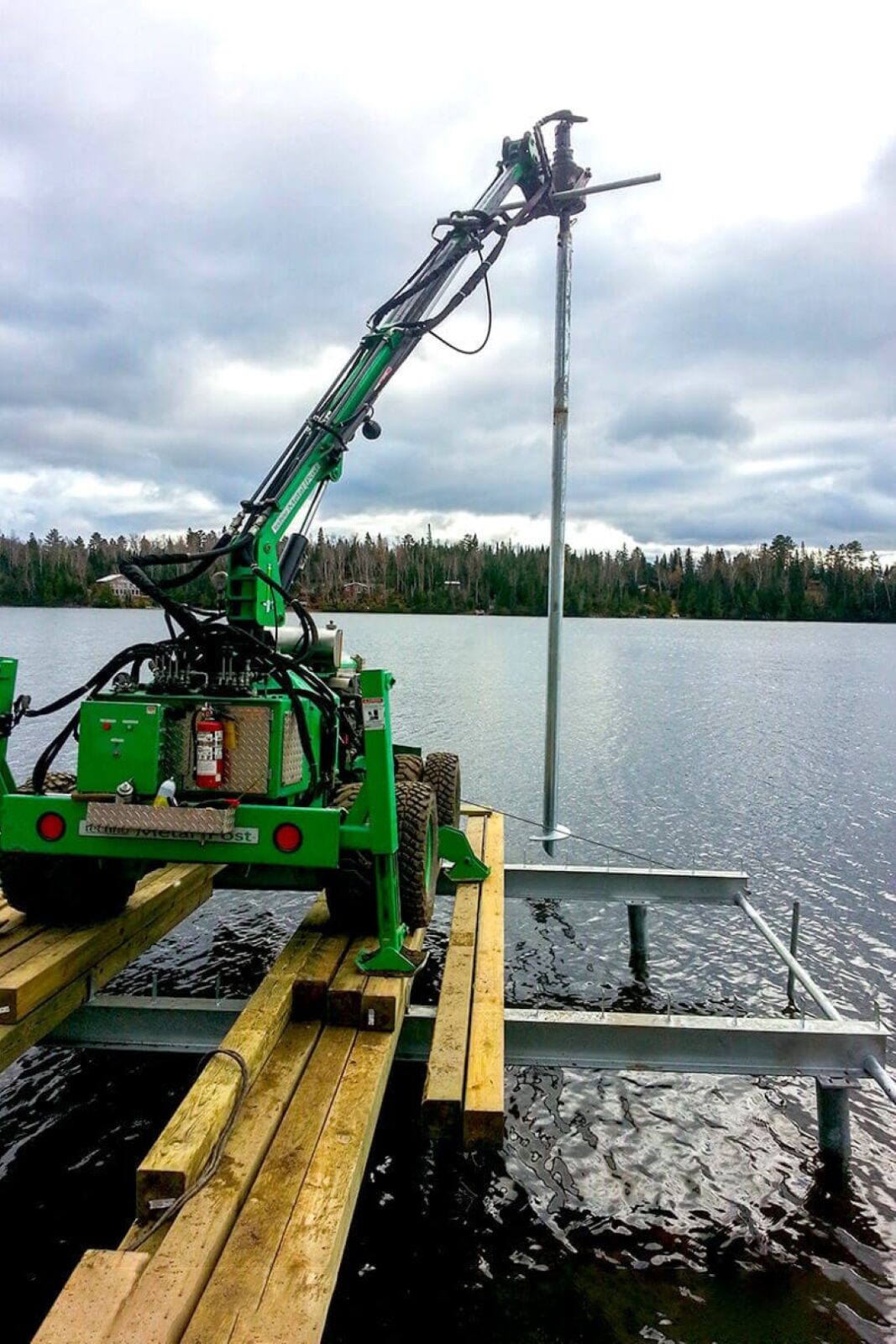
Temporary bridge supports, and folding trestles
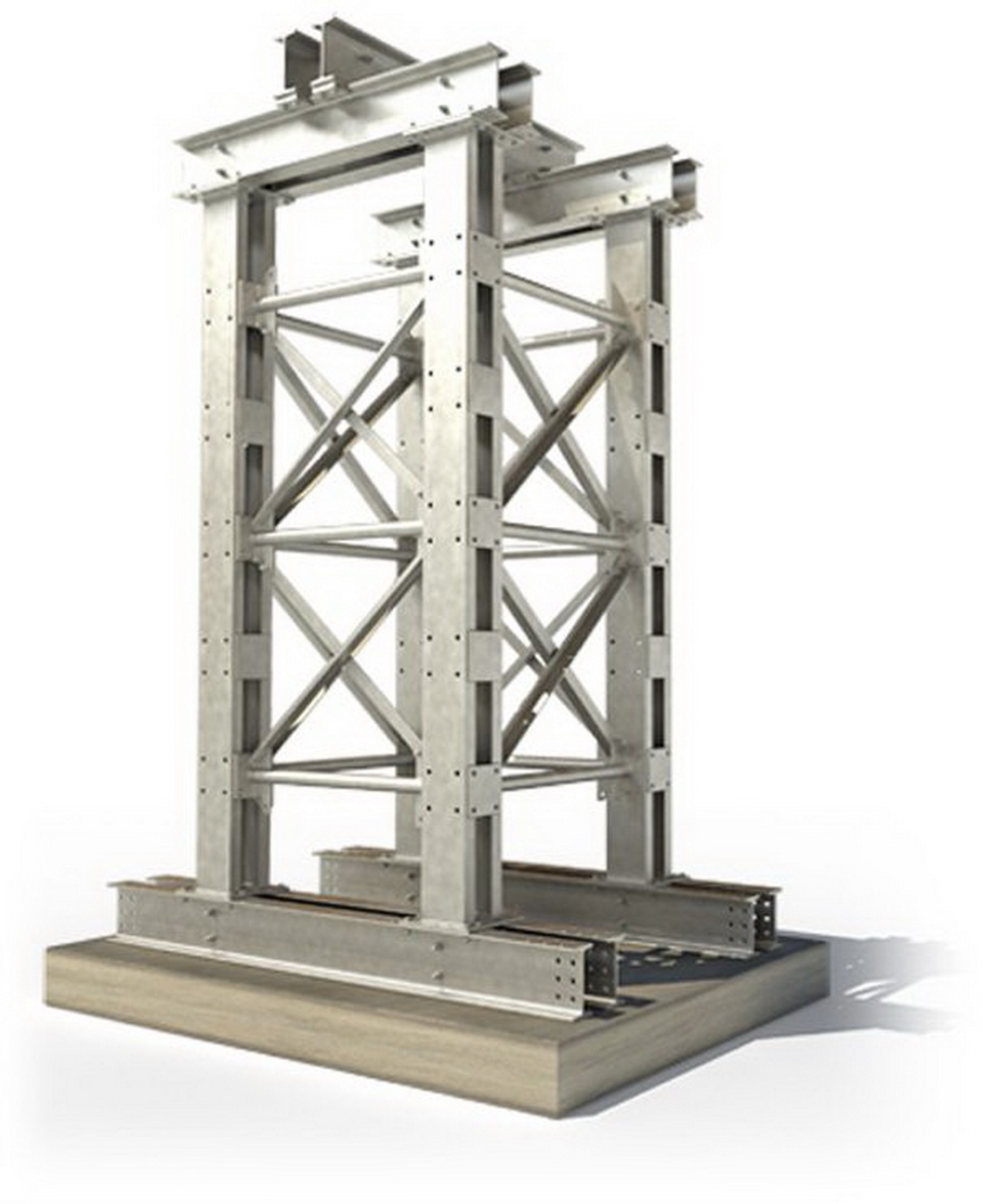
Or something like a geotube.
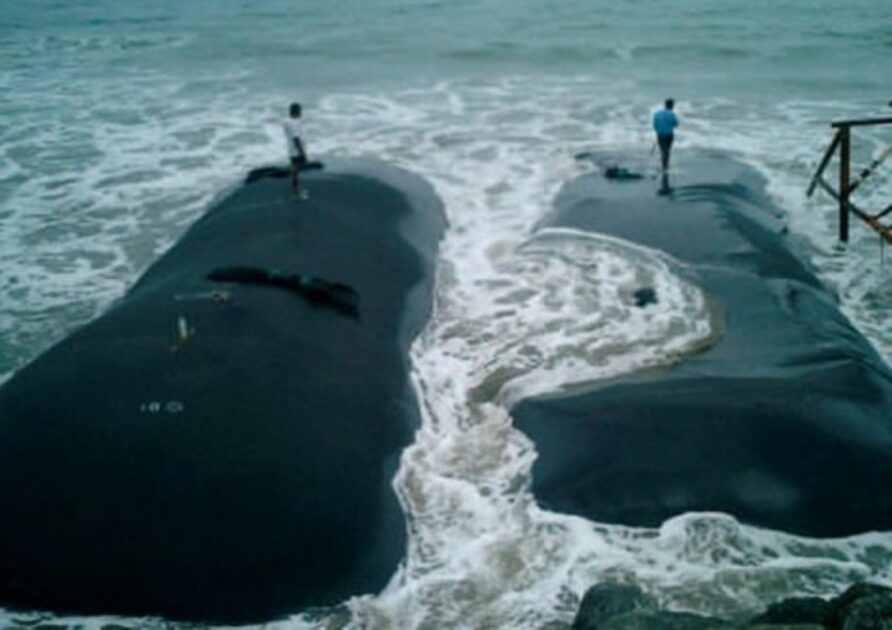
Selection would be dependent on local conditions, and they don’t have to look neat either, even filled ISO containers could be looked at.
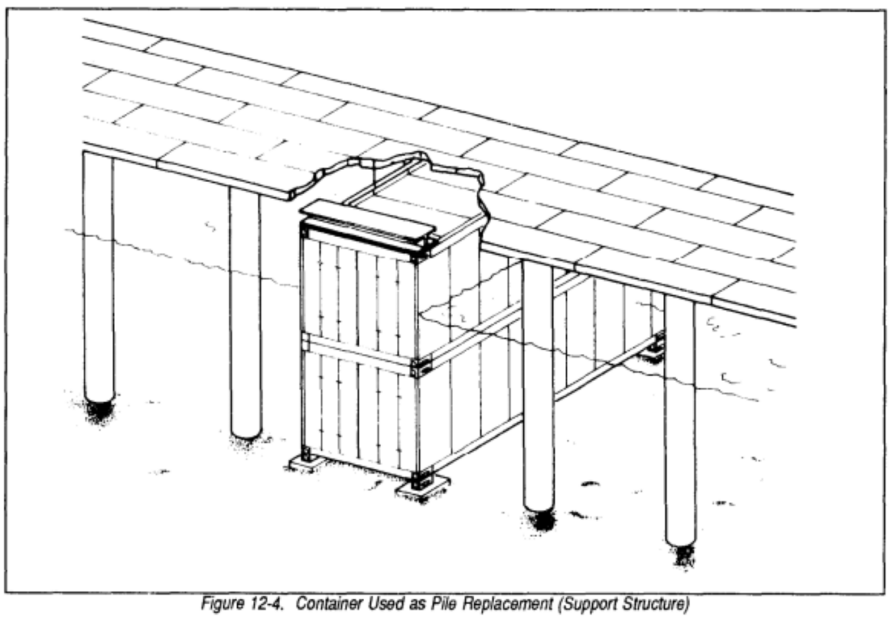
The deck itself could utilise conventional bridging components, lifted straight onto the supports.
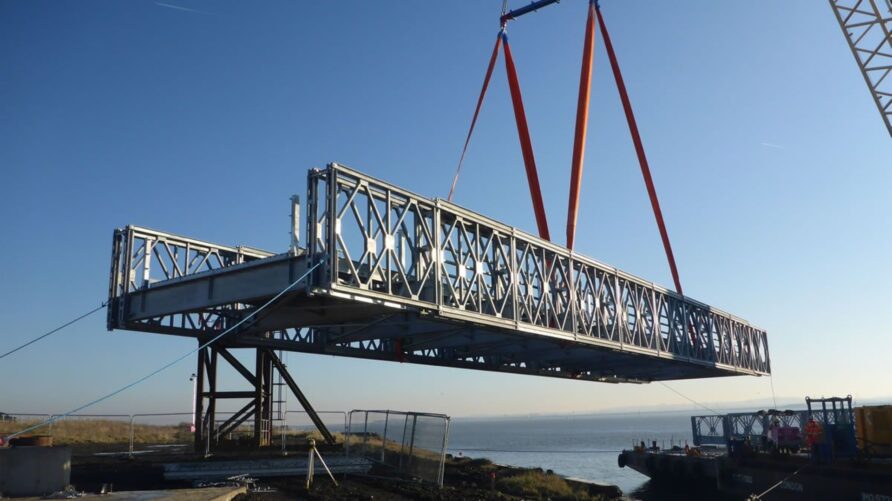
The distance from shore would be dictated by required water depth at the pier head
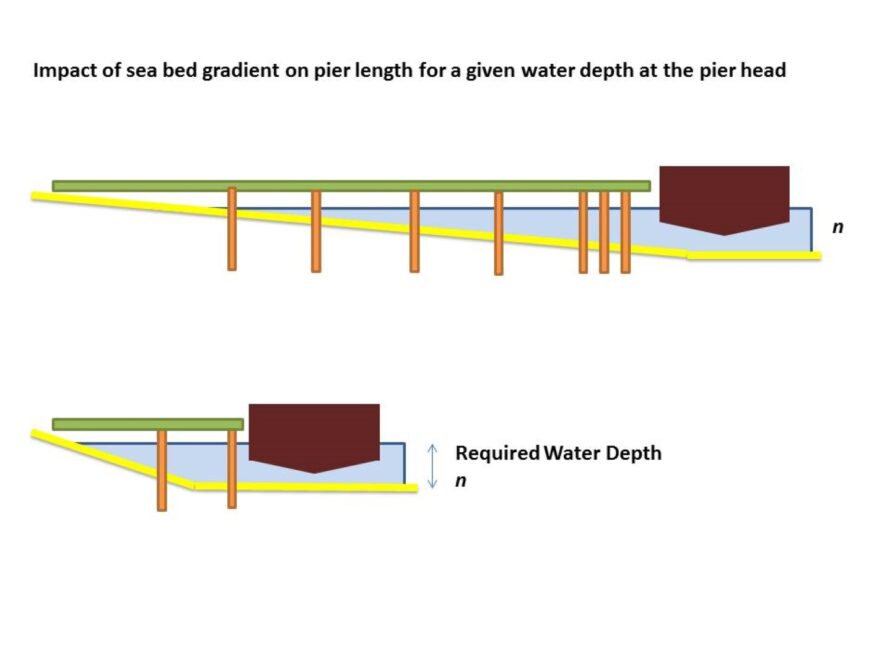
The pier head itself could be a simple buffer pontoon and linkspan, or Wavewalker itself.

It would need to install a couple of piles for protection against any berthing forces.
Or, it could simply use its crane(s) to offload lighters.
Build sequence would be, towed to site…
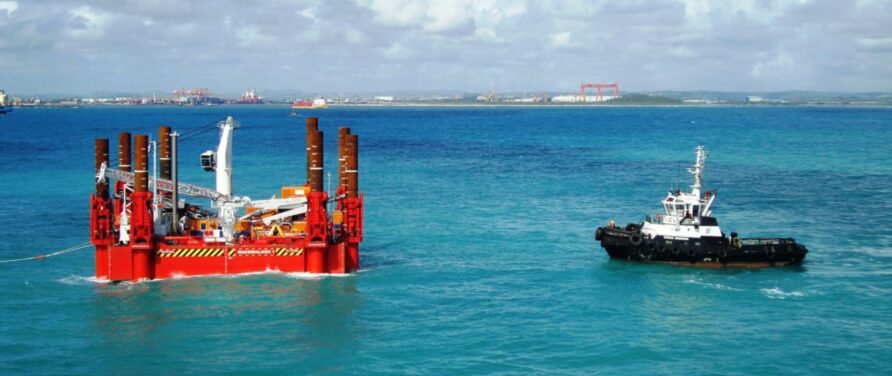
It would walk to the highest point on the shore, and walk out to the sea.
As it went, it could install temporary piers or trestles, and a deck constructed of prefabricated bridge panels.
Speed would be important, there would be little point in investing in this type of solution if the pier took a month to build.
24 to 48 hours should be the objective, arrive at a surveyed site, unload, walk onto the shore, and build out to sea.
An alternative to towing to site would be to carry on a heavy lift ship of some sort, as described in this post
Wavewalker can also be scaled down, and this would also probably make more sense in this particular application.
Before reading on, would you mind if I brought this to your attention?
Think Defence is a hobby, a serious hobby, but a hobby nonetheless.
I want to avoid charging for content, but hosting fees, software subscriptions and other services add up, so to help me keep the show on the road, I ask that you support the site in any way you can. It is hugely appreciated.
Advertising
You might see Google adverts depending on where you are on the site, please click one if it interests you. I know they can be annoying, but they are the one thing that returns the most.
Make a Donation
Donations can be made at a third-party site called Ko_fi.

Think Defence Merch
Everything from a Brimstone sticker to a Bailey Bridge duvet cover, pop over to the Think Defence Merchandise Store at Red Bubble.
Some might be marked as ‘mature content’ because it is a firearm!
Affiliate Links
Amazon and the occasional product link might appear in the content, you know the drill, I get a small cut if you go on to make a purchase
Wavewalker — Defence Applications (VLS Reload)
Although perhaps less practical, an uncrewed Wavewalker (or similar) could be used to position itself in waters up to 20m deep.
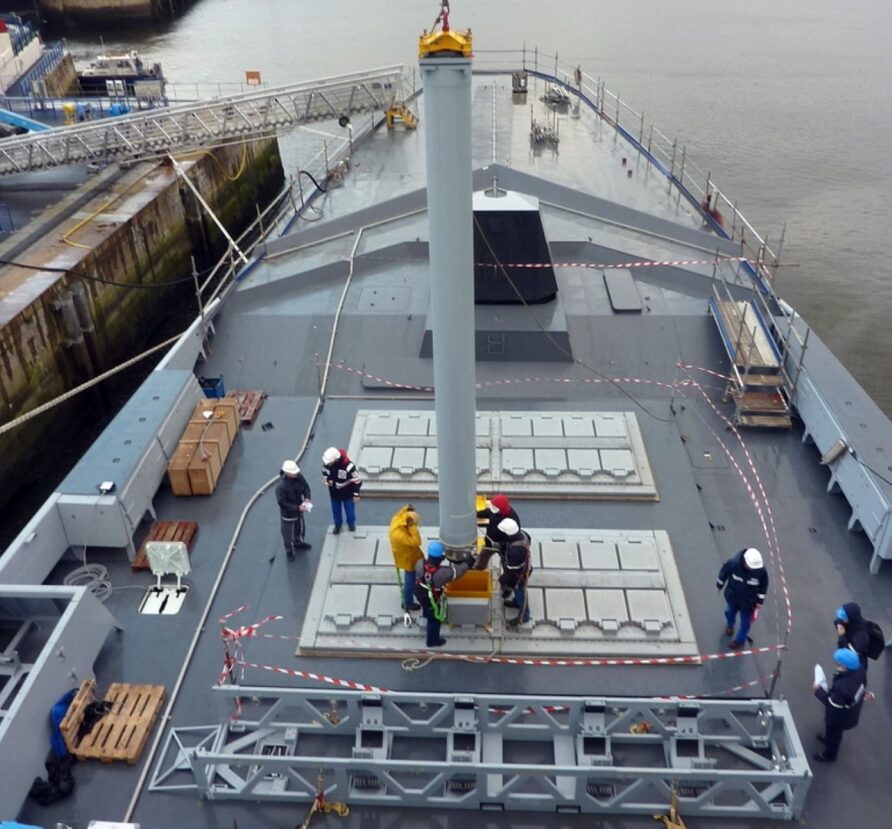
Acting a semi mobile ammunition jetty, isolating wave movement, would allow a heave compensated crane to be much more easily used than ship to ship transfer.
VLS reloading seems to be one of those enduring problems that now being looked at again seriously.
Wavewalker could be used, but I think a jackup vessel, as commonly used in the offshore wind industry, might provide a more practical solution, I will probably cover this subject in a separate post in the future.
Read more



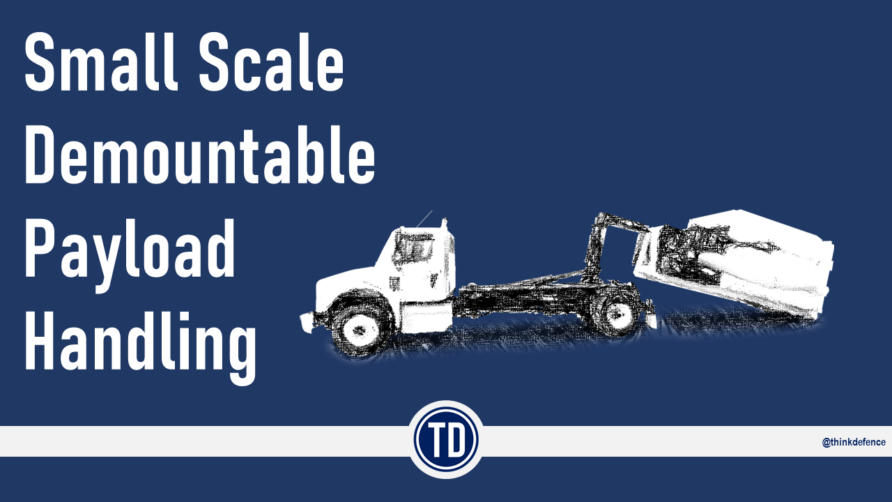

I *knew* ISO containers would appear in their somewhere. Old habits die hard, eh? :-)
guilty!
Sleepysailor's idea is good. I would only suggest that a semi-submersible design would be more efficient as a transporter, and faster and safer to deploy than a tow, granting longer distances travelled at higher speeds in a wider range of sea states. The USN operates the
expeditionary transfer dock which was developed into the expeditionary mobile base. the UK could replicate this to a degree, using a single platform for both roles with a semi submersible that can accomodate one or two walkers, and a large deck house and flight deck and small craft facilities to act as an expeditionary base/littoral support ship. Alternatively, this expanded deck hoise could be devoted to workshops and repair and replace RFA Diligence in that role. They could also flex to assist the
Point class ships with logistical transport when not building piers or fixing warships.
Hi Mike, great to see you back
How easy would these be to turn more "boat-like"?
The main issue with using these for defence seems to me to be that they need to be towed very slowly to the point of use, because there are very few cranes that can lift them and they are too big to fit in a well dock.
The solution must be to make them more hydrodynamic, or even self-propelled. A cross between the current design and a more traditional jack-up vessel, maybe.
That would make an excellent repair/ VLS ship, especially with a big enough crane and long enough legs.
To build piers they don't need to be that big, so maybe a smaller type with folding legs could fit in a Bay?
Could the mobile legs attach to the Mexeflote modular system?
Some of the ships for installing wind turbines have legs but don't 'walk'. Four legs fitted to a ro-ro ferry could be an option for rapid jetty (though probably difficult structurally).
While I love lift ships, I think the MSC's expeditionary docks are too big and expensive for the VLS rearm role, we would never have enough of them, and so they would make fantastic targets (and so need to be heavily/expensively protected).
I like the barge/tug concept because a Jackup barge is relatively cheap and we could build a lot of them quite quickly.
That's the idea I was working off.
If you paired up each leg and made them mobile that would give you a basic forwards-backwards movement if you could line up to build a pier.
For the static VLS or repair role the walking wouldn't be necessary and so it would be much easier to just build or buy a jack-up vessel and adapt it for the military environment.
I don't think a smallish one would cost that much and provide a useful "fleet deployed maintenance" capability. Just needs a bay to jack up in.